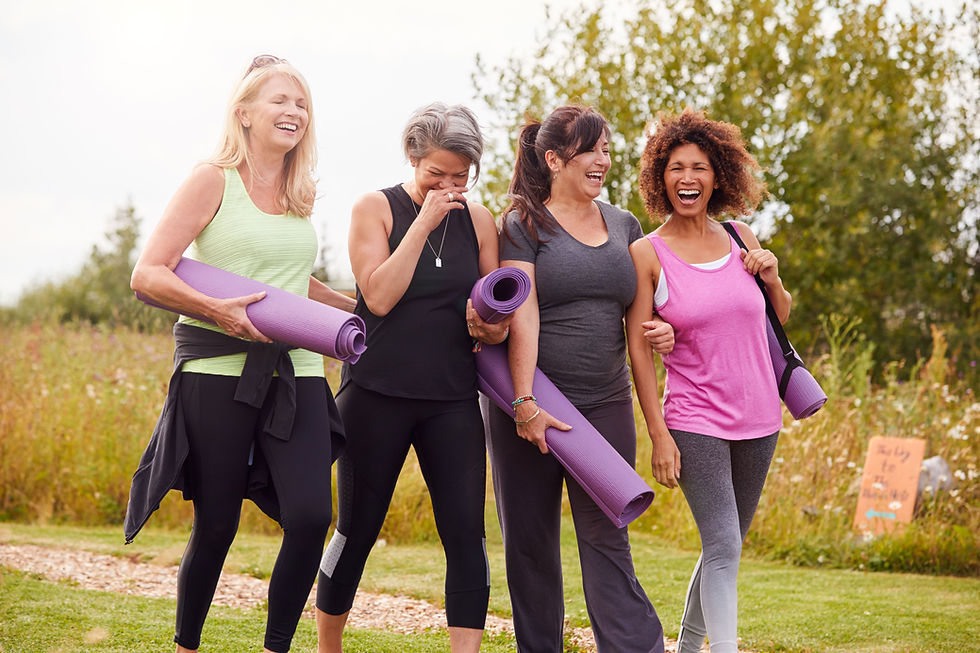What Treatments Can Help My Knee Pain?
- Physionique

- May 8, 2019
- 3 min read
Updated: Feb 9, 2022
Knee pain can cause excruciating pain and hamper mobility in a big way. Knee pain can be overuse or traumatic, as in a tackle or pivoting fall. Physiotherapy helps bring relief to knee strain and injuries.

Knee Pain
There are numerous structures in and around the knee that can get injured and cause pain: the numerous ligaments, cartilage, tendons, muscles and bone surfaces. The history, physical examination and diagnostic tests such as magnetic resonance imaging (MRI) help to determine the injured structures. Causes of knee pain can be overuse or traumatic, as in a tackle or pivoting fall. Biomechanical factors such as pronated feet (collapsed arches), knock knees and any mal-alignment of the legs can contribute to knee pain.
Pain Under The Knee Cap (Patella)
Pain under the knee cap (patella) is often related to muscle imbalance: tight structures on the outer aspect of the knee and weak muscles on the inner aspect. The tight structures pull the patella away from its centred position in its groove as the knee bends and straightens. The result is grinding and increased cartilage wear and tear.
Physiotherapy treatment consists of a balancing process of stretching the tight structures, strengthening the weak muscles, realigning the patella through taping and correction of biomechanical factors.
Pain Below the Knee Cap (Patella)
Patellar tendonitis is an overuse injury involving the tendon that joins the patella to the bony prominence of the tibia. It is common in athletes engaged in running and jumping activities. A tight quadriceps muscle is often found on examination. Ultrasound, deep tissue massage, quadriceps stretching and strengthening is the treatment of choice. Taping is effective in supporting the tendon during sport.
Pain On The Outer Side Of The Knee
Pain on the outer side of the knee can be due to friction between a fibrous band, called the ilio-tibial band (ITB) as it slides over the underlying bone. The ITB extends from the hip, down the outer thigh and attaches to the outer side of the knee. It is a well-recognized cause of knee pain in runners and is commonly called “runner’s knee”, although cyclists, skiers and soccer players also suffer from it. The condition is caused by overuse and is more likely if the ITB is tight or if there are leg and foot alignment issues. Treatment involves addressing biomechanical factors, like pronated feet (collapsed arches) and leg length discrepancy, as well as releasing a tight ITB with therapeutic massage and stretching.
Osteoarthritis In The Knee
Osteoarthritis refers to degeneration of the cartilage that lines the joint surfaces. As the cartilage wears out, the bones grind against each other, causing pain, swelling, bone spurs and joint stiffness. While the exact cause is unknown, there are known to be several possible causes including injury, age, congenital predisposition, immobility and obesity. Physiotherapy can minimize the deterioration and pain by improving muscle flexibility and strength, alignment and joint mobility of the knee.
Ligament & Cartilage Tears
The knee requires a great deal of stability. It is held together by numerous ligaments that restrict excessive movement in different directions. The anterior and posterior cruciate ligaments deep in the knee control forward and backward movement of the tibia respectively, while the medial and lateral collateral ligaments control sideways movements. The knee also takes a lot of impact when running and jumping. The shock is absorbed by the medial and lateral meniscus, two pieces of cartilage that act as cushions. These ligaments and cartilage can become partially sprained or fully torn from trauma.
A higher incidence is seen in sports involving pivoting, tackling, falls and quick changes of direction, such as soccer, rugby and skiing. Surgery is recommended for significant anterior cruciate ligament (ACL) and meniscus tears in the active sportsperson. Physiotherapy rehabilitation before and after surgery will facilitate a successful return to sport. Most other ligament injuries respond well to conservative treatment, with emphasis on quadriceps and hamstring strengthening.
Got #kneepain? Physionique is here to help #physiotherapy #physioclinic




留言